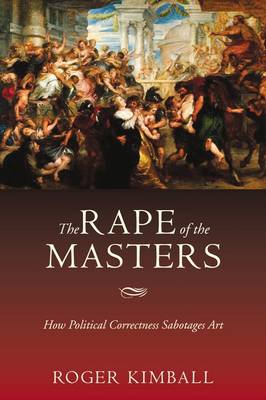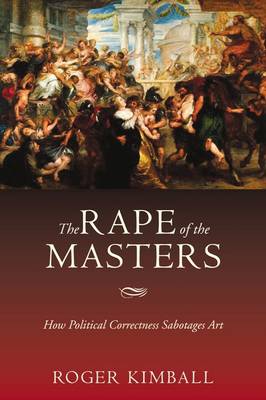
- Afhalen na 1 uur in een winkel met voorraad
- Gratis thuislevering in België vanaf € 30
- Ruim aanbod met 7 miljoen producten
- Afhalen na 1 uur in een winkel met voorraad
- Gratis thuislevering in België vanaf € 30
- Ruim aanbod met 7 miljoen producten
Zoeken
€ 19,45
+ 38 punten
Uitvoering
Omschrijving
Colleges and universities used to teach art history to encourage connoisseurship and acquaint students with the riches of our artistic heritage. But now, as Roger Kimball reveals in this witty and provocative book, the student is less likely to learn about the aesthetics of masterworks than to be told, for instance, that Peter Paul Rubens' great painting Drunken Silenus is an allegory about anal rape. Or that Courbet's famous hunting pictures are psychodramas about "castration anxiety." Or that Gauguin's Manao tupapau is an example of the way repression is "written on the bodies of women." Or that Jan van Eyck's masterful Arnolfini Portrait is about "middle-class deceptions ... and the treatment of women." Or that Mark Rothko's abstract White Band (Number 27) "parallels the pictorial structure of a pieta." Or that Winslow Homer's The Gulf Stream is "a visual encoding of racism." In "The Rape of the Masters: How Political Correctness Sabotages Art," Kimball, a noted art critic himself, shows how academic art history is increasingly held hostage to radical cultural politics--feminism, cultural studies, postcolonial studies, the whole armory of academic antihumanism. To make his point, he describes how eight famous works of art (reprinted here as illustrations) have been made over to fit a radical ideological fantasy. Kimball then performs a series of intellectual rescue operations, explaining how these great works should be understood through a series of illuminating readings in which art, not politics, guides the discussion. "The Rape of the Masters" exposes the charlatanry that fuels much academic art history and leaks into the art world generally, affecting galleries, museums and catalogues. It also provides an engaging antidote to the tendentious, politically motivated assaults on our treasured sources of culture and civilization.
Specificaties
Betrokkenen
- Auteur(s):
- Uitgeverij:
Inhoud
- Aantal bladzijden:
- 200
- Taal:
- Engels
Eigenschappen
- Productcode (EAN):
- 9781594031212
- Verschijningsdatum:
- 1/11/2005
- Uitvoering:
- Paperback
- Formaat:
- Trade paperback (VS)
- Afmetingen:
- 154 mm x 229 mm
- Gewicht:
- 358 g

Alleen bij Standaard Boekhandel
+ 38 punten op je klantenkaart van Standaard Boekhandel
Beoordelingen
We publiceren alleen reviews die voldoen aan de voorwaarden voor reviews. Bekijk onze voorwaarden voor reviews.











